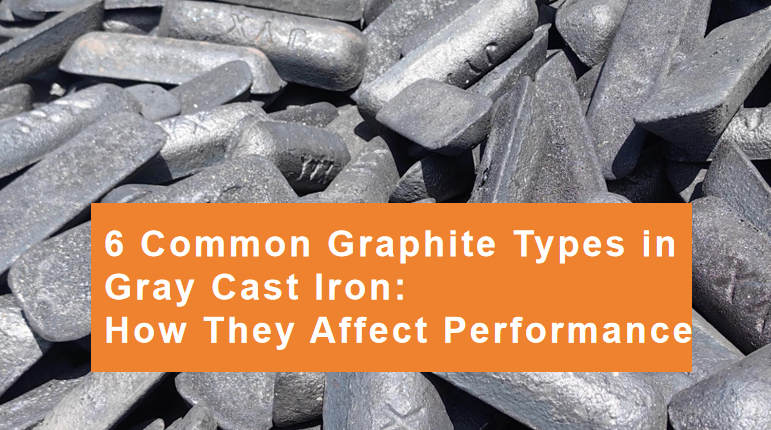6 Common Graphite Types in Gray Cast Iron
2025-08-07 14:41:10 hits:0

In the microstructure of gray cast iron, the quantity, morphology, length, and distribution of graphite significantly affect the material’s mechanical properties. According to China’s standard GB/T 721-87 Metallographic Examination of Gray Cast Iron (which includes typical classification diagrams), graphite in gray cast iron is categorized into six main types based on morphology. Each type varies markedly in its formation conditions and influence on cast iron performance.
1. Type A (Flake Graphite)
As the most common graphite structure in hypoeutectic gray cast iron (with carbon content below the eutectic point), Type A graphite typically forms under conditions of high eutectic degree (i.e., high carbon saturation or carbon equivalent) and low undercooling, presenting a uniform distribution. This type of graphite causes minimal disruption to the metal matrix and maintains a high pearlite content in the cast iron, thus significantly enhancing its strength and wear resistance. In high-quality gray cast iron, Type A graphite usually accounts for over 90% of the total graphite content.
2. Type B (Rosette Graphite)
This type is mostly found in gray cast iron with high eutectic degree (close to the eutectic point) and large undercooling. Due to significant undercooling, initially formed fine graphite eutectics grow rapidly in a radial pattern. Subsequently, the release of latent heat of crystallization slows down the growth rate, gradually forming strip-like structures and eventually developing into a three-dimensional rosette-like graphite structure. The fine, dense graphite at its core easily promotes ferrite formation, which adversely affects cast iron properties. However, in practical production, a small amount of Type B graphite is generally permissible.
3. Type C (Coarse Flake or Lumpy Graphite)
Type C graphite is a hallmark of hypereutectic gray cast iron (with carbon content above the eutectic point). It forms from coarse primary graphite precipitated from molten iron, which often connects to one another or are extremely close in proximity. Additionally, ferrite frequently forms around it (due to high carbon and silicon content, the eutectoid transformation follows a stable equilibrium mode), leading to a significant decline in cast iron performance. Since most gray cast irons are hypoeutectic, Type C graphite is prohibited in all grades except for special cases such as piston rings and certain brake drums/disks. Note that insufficient cupola melting temperatures or the use of low-grade pig iron may also result in coarse graphite similar to Type C.
4. Type D (Dendritic Point Graphite)
Type D graphite, also called undercooled graphite, primarily forms in cast iron structures with low eutectic degree and/or large undercooling—such as thin sections of castings or thinner areas of high-strength grade castings. Its formation stems from significant undercooling of molten iron, often accompanied by undercooled ferrite. With an uneven dendritic point distribution, it negatively impacts cast iron properties. In thin casting sections, no more than 5% undercooled graphite is generally allowed.
5. Type E (Dendritic Flake Graphite)
Type E graphite, another form of undercooled graphite, forms under greater undercooling than Type D. Consequently, its distribution is more uneven with stronger directionality, exerting a more pronounced adverse effect on properties. It is important to note that in high-strength gray cast iron production, undercooled structures in thin sections (e.g., below 5mm) are unavoidable due to the inherent metallic properties of gray cast iron. While undercooled structures may reduce some performance metrics, the refinement of eutectic cells resulting from rapid cooling enhances the material’s hardness and strength. Thus, for parts not requiring high wear resistance (e.g., cylinder blocks and crankcases), undercooled structures are acceptable, as the strength of thin sections does not necessarily decrease in terms of hardness and strength.
6. Type F (Star-Shaped Graphite)
Type F graphite forms in hypereutectic cast iron under extreme undercooling (rapid cooling), commonly in special castings like piston rings. This graphite type offers excellent wear-reducing properties and is typically accompanied by a highly dispersed fully pearlitic matrix, making it suitable for the operational needs of specific castings.

 en
en  fra
fra  de
de  ru
ru  ara
ara  gle
gle  it
it  jp
jp  kor
kor  th
th  zh
zh 


